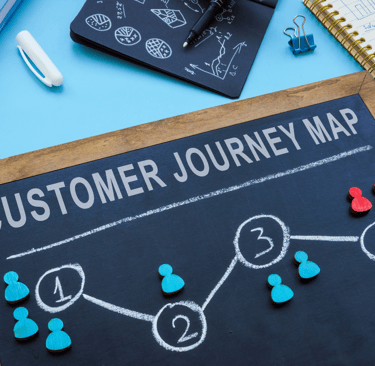Customer Journey Mapping 101: A Practical Guide to Getting Started
Learn how to create effective customer journey maps with this practical guide. Discover step-by-step strategies, free and advanced tools, and actionable insights to enhance customer satisfaction and drive business success. Elevating Everyone offers tailored support to help your organization build impactful, data-driven customer experiences.
Doug Ward
3/4/20253 min read


Introduction: What is Customer Journey Mapping?
Customer journey mapping is a strategic process that helps organizations visualize and analyze how customers interact with their brand across all touchpoints. It goes beyond tracking transactions or service interactions; effective journey mapping digs into the emotions, motivations, and challenges customers experience along the way. The ultimate goal is identifying opportunities to enhance customer satisfaction, improve loyalty, and drive measurable business growth.
Why Customer Journey Mapping Matters
A well-crafted customer journey map is a blueprint for creating exceptional customer experiences. It allows businesses to:
Understand Customer Behavior: Reveal customers' thought processes and actions from awareness to post-purchase.
Identify Pain Points and Opportunities: Highlight areas where the customer experience can be improved, and where opportunities exist to exceed expectations.
Align Internal Processes with Customer Needs: Ensure that every department works cohesively to create a seamless customer experience.
Drive Operational Efficiency: Streamline processes that impact the customer journey, reducing friction and enhancing satisfaction.
Getting Started with Customer Journey Mapping
Set Clear Objectives: Start with the end in mind. What specific outcomes do you want from your customer journey map? These could include reducing churn, enhancing onboarding, strengthening customer service interactions, or increasing sales conversions.
Identify Customer Touchpoints: Make a comprehensive list of all possible interactions a customer may have with your brand. This includes digital (website, emails, social media) and physical touchpoints (in-store visits, customer service calls).
Create Detailed Customer Personas: Develop personas representing your primary customer groups. Go beyond basic demographics and explore behaviors, needs, pain points, and what success looks like from their perspective.
Map Out Each Stage of the Journey: Break the customer journey into clear, actionable stages—typically Awareness, Consideration, Purchase, Retention, and Advocacy. At each stage, identify the customer's goals, challenges, and the actions they are likely to take.
Collect Quantitative and Qualitative Data: Utilize tools like surveys, interviews, analytics, and direct customer feedback. This data provides insights that help validate assumptions and paint a complete picture of the customer journey.
Engage Cross-Functional Teams: Involve representatives from sales, marketing, customer support, operations, and product development. Their input ensures that the journey map reflects real-world experiences rather than assumptions.
Practical Tools and Techniques for Effective Mapping
Visual Mapping Tools: Canva and Google Slides are excellent for creating simple, effective journey maps. These free platforms allow you to build visual maps that can be easily shared and updated.
Advanced Mapping Software: If you need deeper functionality, tools like Lucidchart, Smaply, and Miro offer robust features for creating detailed, dynamic journey maps.
Low-Tech Approaches: Sticky notes and whiteboards are powerful for workshops and team brainstorming sessions. They provide flexibility and encourage collaboration.
Data Collection Tools: Use Google Analytics, Hotjar, or Customer Feedback Surveys (e.g., SurveyMonkey) to gather quantitative data that enriches your journey map with real insights.
Analyzing and Improving the Customer Journey
Once your map is complete, dive deeper into analysis:
Spot Pain Points: Look for stages where the journey stalls or customers express frustration.
Identify Key Opportunities: Find quick wins that can immediately improve the customer experience and consider long-term strategies that require more significant changes.
Test and Iterate: A customer journey map is not static. It should be reviewed and updated regularly as your business and customer expectations evolve.
Measure Success: Establish metrics to track the impact of changes made. These could include Net Promoter Score (NPS), Customer Satisfaction (CSAT) scores, and conversion rates.
Ready to Elevate Your Customer Experience?
Customer journey mapping is a strategic exercise and a powerful tool for transforming customer experience. At Elevating Everyone, we specialize in guiding organizations through this process with tailored support, from mapping out customer journeys to implementing actionable strategies that drive actual results. Whether you want to get started or need help refining your approach, we're here to help. Contact us today to learn how we can collaborate to create impactful, data-driven customer journey maps that align with your business goals and elevate your brand's experience.
Let's map out the journey to your success—together!
Elevating Everyone
Stay in Touch!
doug.ward@elevatingeveryone.com
843-259-2055
© 2025. All rights reserved.
Elevate Everywhere Enterprises, LLC.


